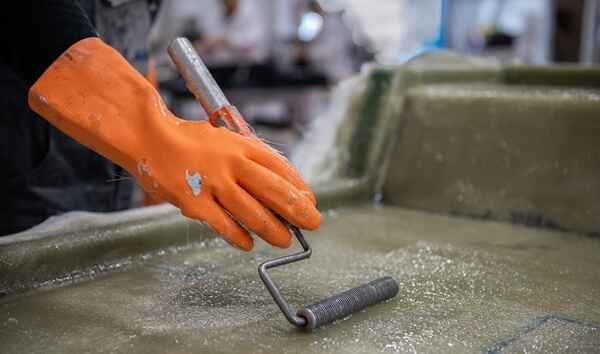Yes, it is illegal to burn fiberglass in most jurisdictions due to its environmental and health risks. Fiberglass, a composite material made of glass fibers and resin, releases toxic chemicals and harmful particles when burned, posing serious threats to air quality and public health. Federal and state environmental laws regulate the disposal and handling of fiberglass to prevent improper burning.
What is Fiberglass?
Fiberglass is a versatile material widely used in construction, insulation, automotive, and marine industries. It is composed of fine glass fibers embedded in a plastic resin matrix, making it lightweight, durable, and heat-resistant. However, the composition of fiberglass also makes it challenging to dispose of safely, as burning it releases harmful substances into the air.

Legal Framework for Burning Fiberglass
1. Federal Laws
Burning fiberglass violates several federal laws aimed at protecting air quality and public health:
- Clean Air Act (CAA): Enforced by the Environmental Protection Agency (EPA), the CAA prohibits open burning of materials that release hazardous air pollutants, including fiberglass. Burning fiberglass releases toxic substances such as styrene, formaldehyde, and fine particulate matter, all of which are regulated under the CAA.
- Resource Conservation and Recovery Act (RCRA): This law governs the disposal of hazardous and non-hazardous waste. Burning fiberglass without proper permits is considered an improper waste disposal method under RCRA.
2. State and Local Regulations
Most states and municipalities have additional restrictions on burning fiberglass:
- California: Strictly prohibits open burning of fiberglass due to its potential to cause air pollution and wildfires. Violations can result in significant fines and legal action.
- Florida: Open burning is regulated by the Florida Department of Environmental Protection, which bans the burning of materials like fiberglass that emit toxic fumes.
- Texas: Requires permits for any burning activities and explicitly bans the burning of synthetic materials, including fiberglass, in most situations.
Why Burning Fiberglass is Dangerous
Burning fiberglass poses serious risks to both human health and the environment:
1. Toxic Emissions:
- Burning fiberglass releases harmful chemicals such as styrene, a suspected carcinogen, and formaldehyde, which can cause respiratory and skin irritation.
- Fine particulate matter (PM2.5) produced during burning can penetrate deep into the lungs, causing long-term health issues.
2. Environmental Damage:
- Fiberglass combustion contributes to air pollution and can harm local ecosystems if toxic particles settle in soil or water sources.
3. Fire Hazards:
- Fiberglass burns at high temperatures and can spread flames rapidly, increasing the risk of accidental fires.
Legal Penalties for Burning Fiberglass
The penalties for burning fiberglass vary by jurisdiction but typically include:
1. Fines:
- Federal and state fines for violating environmental laws can range from hundreds to thousands of dollars.
- Repeat offenders may face steeper fines, especially in states with strict air quality regulations.
2. Criminal Charges:
- Deliberately burning hazardous materials can lead to misdemeanor or felony charges, depending on the severity and intent.
3. Cleanup Costs:
- Individuals responsible for illegal burning may be required to pay for environmental cleanup and remediation efforts.
Alternatives to Burning Fiberglass
Proper disposal of fiberglass is essential to avoid legal and environmental consequences:
1. Recycling:
- Some companies specialize in recycling fiberglass into new products, such as construction materials or industrial composites.
2. Landfill Disposal:
- If recycling is unavailable, fiberglass can be disposed of in designated landfills. However, it must be properly bagged and labeled as non-biodegradable waste.
3. Professional Waste Services:
-
- Hiring a licensed waste disposal service ensures compliance with local and federal regulations.
Recent Updates and Legal Trends
1. Increased Monitoring
As of 2024, the EPA and state environmental agencies have ramped up monitoring of illegal burning activities, including fiberglass, due to heightened concerns about air quality.
2. Sustainable Disposal Initiatives
Several states, including California and New York, have introduced programs encouraging businesses to adopt sustainable practices for fiberglass disposal, such as recycling and reuse.
3. Public Awareness Campaigns
Environmental organizations are raising awareness about the dangers of burning synthetic materials like fiberglass and promoting eco-friendly disposal methods.
FAQs About Burning Fiberglass
Q1. Is it ever legal to burn fiberglass?
Ans: Burning fiberglass is illegal in most cases. Exceptions may exist for facilities with specialized incinerators designed to handle hazardous materials, but these require permits and strict compliance with environmental regulations.
Q2. What happens if I burn fiberglass on my property?
Ans: Burning fiberglass on your property without proper authorization is likely illegal. You may face fines, cleanup costs, and potential legal action.
Q3. Can fiberglass be safely incinerated?
Ans: Yes, but only in facilities equipped with high-temperature incinerators and proper filtration systems to neutralize toxic emissions. Open burning is not safe or legal.
Q4. How can I dispose of fiberglass legally?
Ans: You can recycle fiberglass through specialized programs or dispose of it at designated landfills. Contact local waste management authorities for guidance.
Q5. Why is burning fiberglass harmful?
Ans: Burning fiberglass releases toxic chemicals and particulate matter that harm human health, contribute to air pollution, and damage the environment.

